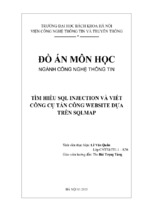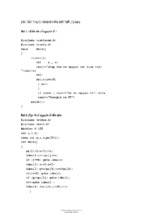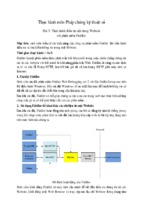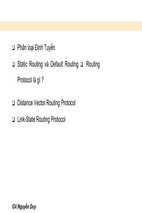50
3.5
3.5.1
CHAPTER 3. BREAKING THE SECURITY OF WI-FI
Security Supplements
Bypassing MAC Address Filters
MAC address filters are not part of the IEEE 802.11 specification, nonetheless they
are found in many Wi-Fi access points as an optional security mechanism. Its purpose
is to deny access to any network interface card with an address that is not authorized.
A table of authorized MAC addresses are stored in the access point. It is effective
at keeping novice neighbors off an open network. However MAC addresses are never
kept a secret and a network card may change its address to match someone else’s
address. All that has to be done to bypass the security is to capture a frame from a
client, wait for the client to disconnect, and then change to the clients MAC address
and connect.
3.5.1.1
Avoiding Interference
If two computers share a MAC address simultaneously, one for a client, and one for
an intruder, they would end up interfering with each other to the point where communications would be disrupted and discontinued. But if the intruder only receives
responses which are discarded and ignored by the client, he may tunnel all his communications through the use of only these protocols. To do this, the intruder needs
an opening on the other side of the tunnel—he must have control of another computer
already on the Internet.
OpenVPN is a set of tunneling software available for many platforms including
Linux and windows. It has the ability to tunnel traffic through only UDP packets or
a single TCP connection. Additionally there are features that allow the tunnel to be
encrypted and authenticated at both ends of the tunnel.
The rest of the section demonstrates how an OpenVPN tunnel is created from
Linux. The ifconfig program is a networking tool to configure network interfaces in
Linux. route is a program for configuring network routes, so that network traffic is
transmitted over the correct network.
First the endpoint of the tunnel must be opened, this is done with the command
in line one of Listing 3.16
Listing 3.16: Opening an end-point of a OpenVPN tunnel.
r e m o t e h e l p e r # openvpn -- local 192.168.5 .1 -- dev tun0
Mon Aug 8 17:09:11 2005 OpenVPN 2.0 i486 - pc - linux - gnu [ SSL ] [ LZO ] [ EPOLL ]
built on Jul 6 2005
Mon Aug 8 17:09:11 2005 IMPORTANT : OpenVPN ’ s default port number is now 1194 ,
based on an official port number assignment by IANA . OpenVPN 2.0 - beta16 and
earlier used 5000 as the default port .
Mon Aug 8 17:09:11 2005 ******* WARNING *******: all encryption and
a u t h e n t i c a t i o n features disabled -- all data will be tunnelled as cleartext
Mon Aug 8 17:09:11 2005 TUN / TAP device tun0 opened
Mon Aug 8 17:09:11 2005 UDPv4 link local ( bound ) : 1 9 2 . 1 6 8 . 5 . 1 : 1 1 9 4
3.5. SECURITY SUPPLEMENTS
Mon Aug
Mon Aug
Mon Aug
51
8 17:09:11 2005 UDPv4 link remote : [ undef ]
8 17:18:26 2005 Peer Connection Initiated with 1 9 2 . 1 6 8 . 5 . 4 : 1 1 9 4
8 17:18:26 2005 I n i t i a l i z a t i o n Sequence Completed
The two following commands setup routing on the helping host.
r e m o t e h e l p e r # ifconfig tun0 up 192.168.6 . 1
r e m o t e h e l p e r # route add - net 192.168.6 . 0 netmask 2 5 5 . 2 5 5 . 2 5 5 . 0 tun0
The intruder switches his network card to use the clients MAC address as discovered through sniffing. ifconfig has a feature to do this and the command below
changes the MAC address of the eth1 network interface card to 01:02:03:04:05:06.
hacker # ifconfig eth1 hw ether 0 1 : 0 2 : 0 3 : 0 4 : 0 5 : 0 6
Now the intruder has identical access to the Internet as the client he is spoofing.
In order to not disturb the client, a tunnel is constructed so that all traffic is sent in
UDP packets destined for the helping host that was set up in Listing 3.16. Opening
a tunnel to the end-point on the helping host is done with the command on the first
line in Listing 3.17.
Listing 3.17: Connecting to the end-point of the OpenVPN tunnel.
hacker # openvpn -- remote 192.168.5 . 1 -- dev tun0
Mon Aug 8 17:17:13 2005 OpenVPN 2.0 i486 - pc - linux - gnu [ SSL ] [ LZO ] [ EPOLL ] built on
Jul 6 2005
Mon Aug 8 17:17:13 2005 IMPORTANT : OpenVPN ’ s default port number is now 1194 ,
based on an official port number assignment by IANA . OpenVPN 2.0 - beta16 and
earlier used 5000 as the default port .
Mon Aug 8 17:17:13 2005 ******* WARNING *******: all encryption and
a u t h e n t i c a t i o n features disabled -- all data will be tunnelled as cleartext
Mon Aug 8 17:17:13 2005 TUN / TAP device tun0 opened
Mon Aug 8 17:17:13 2005 UDPv4 link local ( bound ) : [ undef ]:1194
Mon Aug 8 17:17:13 2005 UDPv4 link remote : 1 9 2 . 1 6 8 . 5 . 1 : 1 1 9 4
Mon Aug 8 17:17:23 2005 Peer Connection Initiated with 1 9 2 . 1 6 8 . 5 . 1 : 1 1 9 4
Mon Aug 8 17:17:24 2005 I n i t i a l i z a t i o n Sequence Completed
The tunnel is now initialized, and routing must be setup in order to shuffle all
packets through it. The intruder issues the following commands with ifconfig and
route. The first line assigns the IP address 192.168.6.2 to the intruders side of the
tunnel. Line number two adds a route for the 192.168.6.0 network. In the last line,
routing is configured to send all traffic through the helping host, which has the IP
address 192.168.6.1.
hacker # ifconfig tun0 up 192.168.6 . 2
hacker # route add - net 192.168.6 . 0 netmask 2 5 5 . 2 5 5 . 2 5 5 . 0
hacker # route add default gw 192.168.6 . 1
The Internet can now be accessed as it normally would be. To confirm that the
tunnel is in function, below a ping to the IP address 67.84.33.100 is attempted. The
response confirms the tunnel is up and running.
hacker # ping 6 7 . 8 4 . 3 3 . 1 0 0
PING 6 7 . 8 4 . 3 3 . 1 0 0 ( 6 7 . 8 4 . 3 3 . 1 0 0 ) 56(84) bytes of data .
52
CHAPTER 3. BREAKING THE SECURITY OF WI-FI
64 bytes from 6 7 . 8 4 . 3 3 . 1 0 0 : icmp_seq =1 ttl =46 time =152 ms
64 bytes from 6 7 . 8 4 . 3 3 . 1 0 0 : icmp_seq =2 ttl =46 time =134 ms
When the client uses tcpdump to monitor traffic, what he will see is the lines
below: UDP packets which run the intruder’s tunnel. The UDP packets are ignored
by the client and do not disrupt his connection.
victim # tcpdump -i eth1
tcpdump : verbose output suppressed , use - v or - vv for full protocol decode
listening on eth1 , link - type EN10MB ( Ethernet ) , capture size 96 bytes
1 7 : 4 9 : 0 8 . 7 7 6 2 5 2 IP 1 9 2 . 1 6 8 . 5 . 4 . openvpn > 1 9 2 . 1 6 8 . 5 . 1 . openvpn : UDP , length 84
1 7 : 4 9 : 0 8 . 9 0 9 6 7 1 IP 1 9 2 . 1 6 8 . 5 . 1 . openvpn > 1 9 2 . 1 6 8 . 5 . 4 . openvpn : UDP , length 84
1 7 : 4 9 : 0 9 . 7 7 7 0 6 3 IP 1 9 2 . 1 6 8 . 5 . 4 . openvpn > 1 9 2 . 1 6 8 . 5 . 1 . openvpn : UDP , length 84
1 7 : 4 9 : 0 9 . 9 0 9 5 5 5 IP 1 9 2 . 1 6 8 . 5 . 1 . openvpn > 1 9 2 . 1 6 8 . 5 . 4 . openvpn : UDP , length 84
Below is what the intruder will see instead of the UDP packets when using tcpdump to monitor network traffic inside the tunnel: The ping requests and replies.
hacker # tcpdump -i tun0
tcpdump : WARNING : arptype 65534 not supported by libpcap - falling back to
cooked socket
tcpdump : verbose output suppressed , use - v or - vv for full protocol decode
listening on tun0 , link - type LINUX_SLL ( Linux cooked ) , capture size 96 bytes
1 7 : 5 0 : 0 2 . 7 4 2 6 3 7 IP 192.168.6 . 2 > 6 7 . 8 4 . 3 3 . 1 0 0 : ICMP echo request , id 21885 , seq
1 , length 64
1 7 : 5 0 : 0 2 . 8 9 2 4 0 5 IP 6 7 . 8 4 . 3 3 . 1 0 0 > 1 9 2 . 1 6 8 . 6 . 2 : ICMP echo reply , id 21885 , seq
1 , length 64
1 7 : 5 0 : 0 3 . 7 4 3 8 1 7 IP 192.168.6 . 2 > 6 7 . 8 4 . 3 3 . 1 0 0 : ICMP echo request , id 21885 , seq
2 , length 64
1 7 : 5 0 : 0 3 . 8 7 7 7 9 4 IP 6 7 . 8 4 . 3 3 . 1 0 0 > 1 9 2 . 1 6 8 . 6 . 2 : ICMP echo reply , id 21885 , seq
2 , length 64
3.5.2
Defeating Captive Portals
Many captive portals, including many used in hotspots, use MAC address filters as a
way of identifying who has payed to get Internet access. It is possible through the use
of paying customer, to gain access to the Internet. The attack is identical to what is
described in Section 3.5.1.
3.6
Summary
Table 3.2 gives a summary of the vulnerabilities in Wi-Fi. For each attack the security
service it involves and some of the requirements that need to be met in order to
perform the attack listed. The approximate time an attack will take is provided to
give an idea of how practical the attacks are. The time, discussed in the relevant
sections, depends on a large number of factors and therefore varies accordingly.
Table 3.2: Attacks to break the security of Wi-Fi
Attack
Service
Requirements
RC4
Confidentiality, Authentication 300,000 WEP encrypted frames
WEP dictionary
Confidentiality, Authentication Pass-phrase seeded key, 1 data frame
Chosen plaintext
Confidentiality
WEP enabled. Allow 10 byte data size
Redirect
Confidentiality
WEP enabled
Double encryption
Confidentiality
Internet connection
One way auth
Authentication
Shared-key authentication
Spoofing
Authentication
1 active and authenticated client
Rogue access point
Authentication
1 client
Packet injection
Access control
Known IV/key sequence
Profiling
Access control
Known IV/key sequence
MAC filter
Access control
MAC filter enabled
Captive Portal
Access control
MAC filter access control
WPA-PSK dictionary Confidentiality, Authentication Pass-phrase seeded key, handshake
Approximate Time
20 minutes
Norwegian word list in 5 sec.
50 minutes for full frame
Insignificant
At least a few hours
Insignificant
Insignificant
Insignificant
Insignificant
Insignificant
Insignificant
Insignificant
Norwegian word list in 1 hour
Chapter 4
Exploiting Access to Wi-Fi
Networks
This chapter explains how a hacker may utilize a compromised Wi-Fi connection. An
intruder can gather a lot of intelligence on the network and its users. That should
make it clear why everyone should secure their Wi-Fi networks. The main focus of
this chapter is the discovery of the additional advantages an anonymity network, such
as Tor [12], provides intruders of a Wi-Fi network.
4.1
4.1.1
Identity Concealment
Introduction
Although some hackers may connect to Wi-Fi networks for the pure fun and not use
it for anything except confirming access is possible, others can benefit quite a lot from
a connection to a Wi-Fi network. Innocent use such as checking the e-mail account
and downloading the latest on-line newspapers are actually quite common among
neighbors.
The problem for the intruders of a Wi-Fi network is that the owners can monitor
everything they use the connection for. The network owners can capture cleartext
passwords when intruders are checking e-mail, logging into resources on the web,
etc. Every web site the intruders visit can be monitored, or altered by the owner
of the network. Even man-in-the-middle attacks on secure Internet services can be
attempted. All in all, using a compromised Wi-Fi network for anything considered
normal usage of the Internet, is a dangerous habit for an intruder.
With an anonymity network, such as Tor [12], the Wi-Fi intruder gets back the
upper-hand. Tor makes it possible to control the concealment of identity to the extent
where:
55
56
CHAPTER 4. EXPLOITING ACCESS TO WI-FI NETWORKS
The owner of the Wi-Fi network cannot determine who the intruder is communicating with.
The owner of the Wi-Fi network cannot determine the plaintext of the communication.
Contacted parties on the Internet cannot find the originating network of who
they are communicating with.
If the intruder decides to reveal his identity to someone on the Internet, then
that someone can still not determine which network the intruder has broken
into.
4.1.2
The Tor Privacy Network
Figure 4.1: Usage of the Tor network.
The Tor privacy network [12] enables secure identity concealment. The network
consists of hundreds of thousands of computers connected to the Internet. A set of
the connected computers, currently just over 500 [26], act as routers/nodes for the
network and constitutes a virtual network built on top of the Internet. A smaller
set act as gateways. The gateways can either be incoming/entry or outgoing/exit
nodes. Entry nodes allow computers to connect to the Tor network. Exit nodes,
approximatly 200 in number, allow computers in the network to connect with any
ordinary Internet computer.1
1
Some Internet web sites ban any traffic coming from a known Tor exit node. Wikipedia.org is
a well known web site who does this.
4.1. IDENTITY CONCEALMENT
57
The privacy of this network is protected with public key cryptography. All communication over the network, including access to the entry node is encrypted. All
routers and gateways authenticate each other with the help of certificates and a central certificate authority controlled by the Tor organization. A list of entry nodes and
their certificates are stored permanently in the Tor software to make it difficult to
create a false entry node. All intermediate nodes, as well as the entry node, have no
means to get the plaintext. Additionally, any node in the network only know the one
node it gets the communication from, and the one node it passes it on to. To communicate through the Tor network a connection from an entry node to an exit node is
necessary. Anonymity is provided by selecting a number of intermediate nodes that
setup a circuit from the entry to the exit node. There is much more to Tor, enough
to cover at least one entire thesis. Please see [12] for more technical details.
Figure 4.1 illustrates how a communication flows from the point where a computer
accesses the Tor network till it exits by connecting to ordinary Internet hosts, hosts
that have no clue of the real origin of the communication. Ordinary clients on an
attacked Wi-Fi network will only see the encrypted communication between the shy
client and the entry node in the Tor network.
Tor is not perfect, but it aims at making it very difficult to trace a connection
anyone in the network has setup. Some of the deficiencies to be aware of are:
End-to-end timing attacks: Someone who has access to the link to the entry node,
and the link from the exit node, can match, with the use statistical analysis,
traffic patterns to determine that there is a circuit connecting the source and
destination.
Application level leaks: If not all the network traffic is routed through Tor, enough
clues about the communication can result in full exposure.
All nodes compromised: If someone has control over all nodes in a circuit, it becomes trivial to find the source, destination, and plaintext of the communication.
4.1.3
Basic Setup of Tor
Tor is installed on a client such that it creates a complete circuit from the computer
it is on, to an exit node on the Tor network. In order to use the Tor network, all
applications that use the Internet should pipe their communication through the Tor
daemon.2 The actual mechanism used for applications to tunnel their traffic through
2
A daemon is a computer program which runs as a background process and can provide services
to other applications
58
CHAPTER 4. EXPLOITING ACCESS TO WI-FI NETWORKS
Tor, is the SOCKS3 protocol [25]. Any application that supports SOCKS can use
Tor.
The Tor daemon is easy to install and will work pretty much out-of-the-box.
What is more difficult is to make all applications tunnel all their network traffic
through the Tor network. If not all of the traffic is tunneled through Tor, then parts
of the communication process may leak into the Wi-Fi network, unencrypted and
unprotected from others on the network.
To protect from potential leaks, the most effective solution is to setup a firewall.
Any attempts on the intruder’s computer to access anything other than the Tor entry
node, at the specific network port associated with the Tor service, should be denied.
Unfortunately there can be many leaks that cannot be patched with a firewall.
Some of the issues to be aware of are:
Cookie tracking in web browsers. If using the same cookie from a Tor network,
as from another session when Tor is not used, the web server can match the two
and reveal a valid location/IP address for the intruder.
Advanced web browser plug-ins or scripts can access private information about
the intruders computer and send it to the web server.
Presumably the same issues were recently “discovered” by the danish FortConsult
ApS [9], in an attempt to rectify recent problems in Denmark. A group of hackers
utilized Tor to hide their identity when defacing websites, one of which belonged to
the “Konservative Folkepartis”. Any hacker aware of the issues with leaks when using
Tor, can easily disable troublesome software and protect their anonymity.
4.1.4
How to Safely Read E-mail From Anywhere
In the first example, an intruder of a Wi-Fi network is reading his personal e-mail
from an Internet Message Access Protocol (IMAP) account (cleartext protocol.) To
prevent the owners of the Wi-Fi network from figuring out the identity of the intruder,
the intruder uses the Tor network to encrypt and access his e-mail.
1. Connect or break into a Wi-Fi network.
2. Setup a Tor circuit.
3. Configure e-mail reader to use SOCKS through Tor.
4. Read e-mail.
3
SOCKS is a name, not an acronym, despite being spelled with all capital letters.
4.1. IDENTITY CONCEALMENT
59
Step 1 means the intruder does not want his identity to be revealed to the owners
of the Wi-Fi network. The second and third step involve creating a Tor circuit and
routing the sensitive traffic through it. When configured, the intruder can read his
e-mail without the worry that the network owners can get the contents of his e-mails.
4.1.5
How to Become an International Spy
1. Collect top secret information.
2. Use Pretty Good Privacy (PGP) to sign and encrypt the information.
3. Connect to an arbitrary Wi-Fi network.
4. Setup a circuit in the Tor network.
5. Transmit the PGP message through Tor, and then directly over the Internet to
the intelligence agency.
In this second example the intruder, an international spy, wishes to send top secret
material stolen from the local government, back to his own government. The receiving
government must be certain the material they receive is valid and from their agent.
The agent however does not want to reveal his location (the compromised Wi-Fi
network) to anyone. The receiving government must also be sure they can not be
affiliated with any communication to the government or country they are spying on.
With Tor the spy can make direct contact to his local government, proving his identity,
but not revealing his origin in case someone is monitoring the communication link.
Additionally, the government computer systems can not be directly linked to the
country they spy on.
The message the spy sends is a PGP encrypted and signed message. The spy does
not even wish to send the encrypted and signed message as-is since it can expose who
has signed it, and who it was encrypted for. Therefore the extra encryption provided
by Tor is necessary.
The spy will want to use Wi-Fi and not the Internet access in his (temporary)
home since the fact that someone uses Tor could be enough to cause suspicion—
something a spy will want to avoid at all costs. When using Wi-Fi, the use of Tor
cannot be traced back to the spy. It may cause concern that a spy is using a particular
Wi-Fi network, but a good spy could setup multiple Tor networks for multiple Wi-Fi
networks to make it more difficult to find the Wi-Fi network he is actually utilizing
and is in proximity of.
The attacked government have equipment which collect and analyze all communication sent to the spying government, and analyze all traffic leaving their country.
None of the monitoring equipment can expose that the spying government is actually
spying on them, nor where a possible spy could be located.
60
CHAPTER 4. EXPLOITING ACCESS TO WI-FI NETWORKS
Beware of the end-to-end timing attack on Tor since both ends of the circuit
is monitored! A good spy can easily defeat the attack by transmitting a constant
amount of traffic through the circuit for an extended amount of time.
4.2
Gathering Information on a Victim
Chapter 2 had an introduction on how to gather intelligence on a Wi-Fi network.
This section focuses on how it is possible to gather intelligence on the owners or users
of the Wi-Fi network. This is a huge topic, and here it will only barely be touched,
but still give a general idea of what can be achieved.
4.2.1
Scanning the Network and Computers
4.2.1.1
Scanning Through WEP
Figure 4.2: Network scanning through WEP.
Even without a WEP key it is possible to scan the wired network for computers,
and also port scan both wired and wireless computers. It can be argued that it is
much easier to first crack the WEP key, and then perform the scanning detailed in
the next section. But this attack can be performed after the attacker has sent a
single de-authentication frame in shared key authentication networks. However if
the network uses open authentication, the key sequence is more difficult to obtain,
cracking the WEP key first should be considered instead. The technique is clever
and deserves attention even though it is not any longer very relevant in relation to
WEP. The attack uses the possibility of packet injection in WEP encrypted network
- Xem thêm -




















